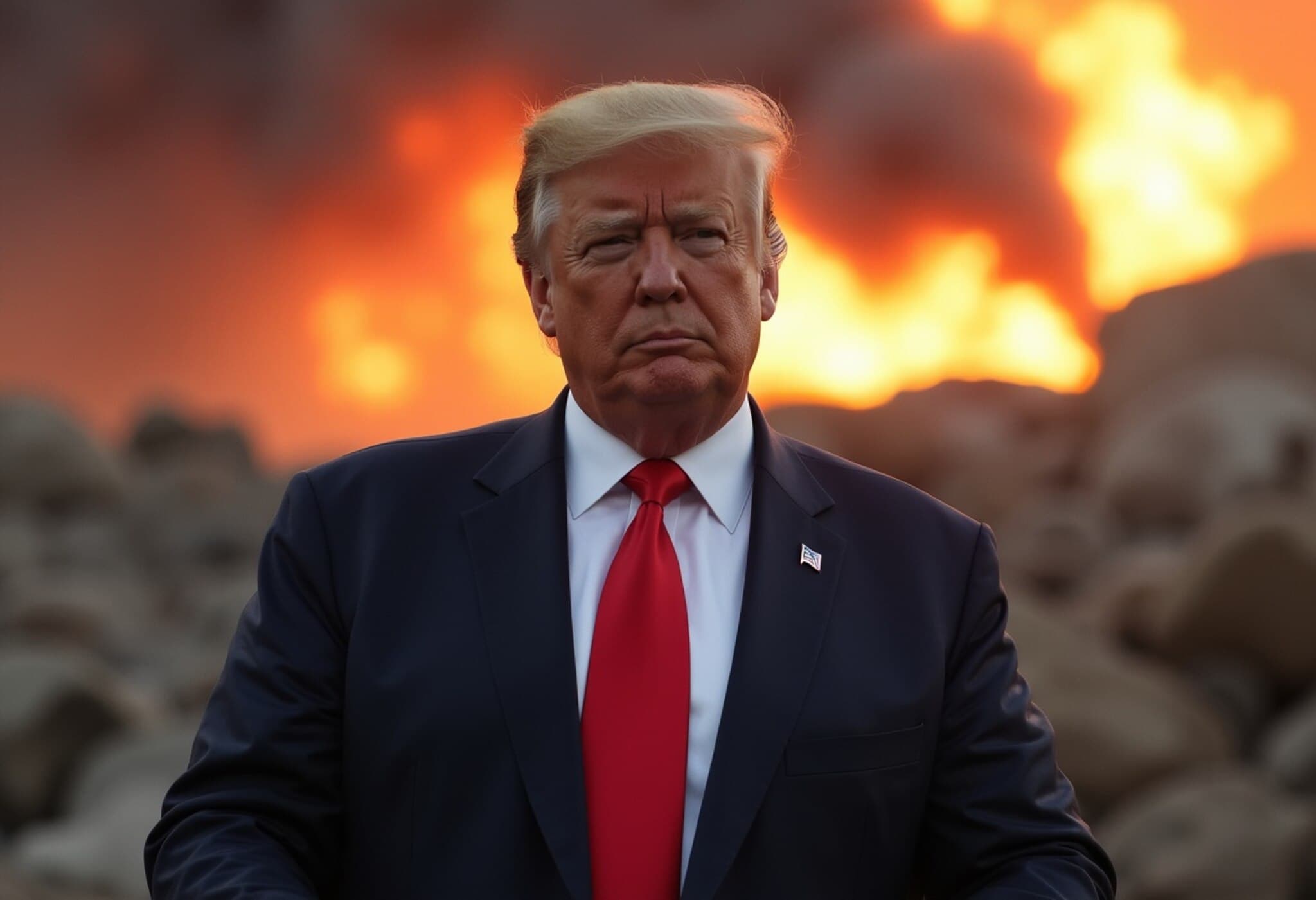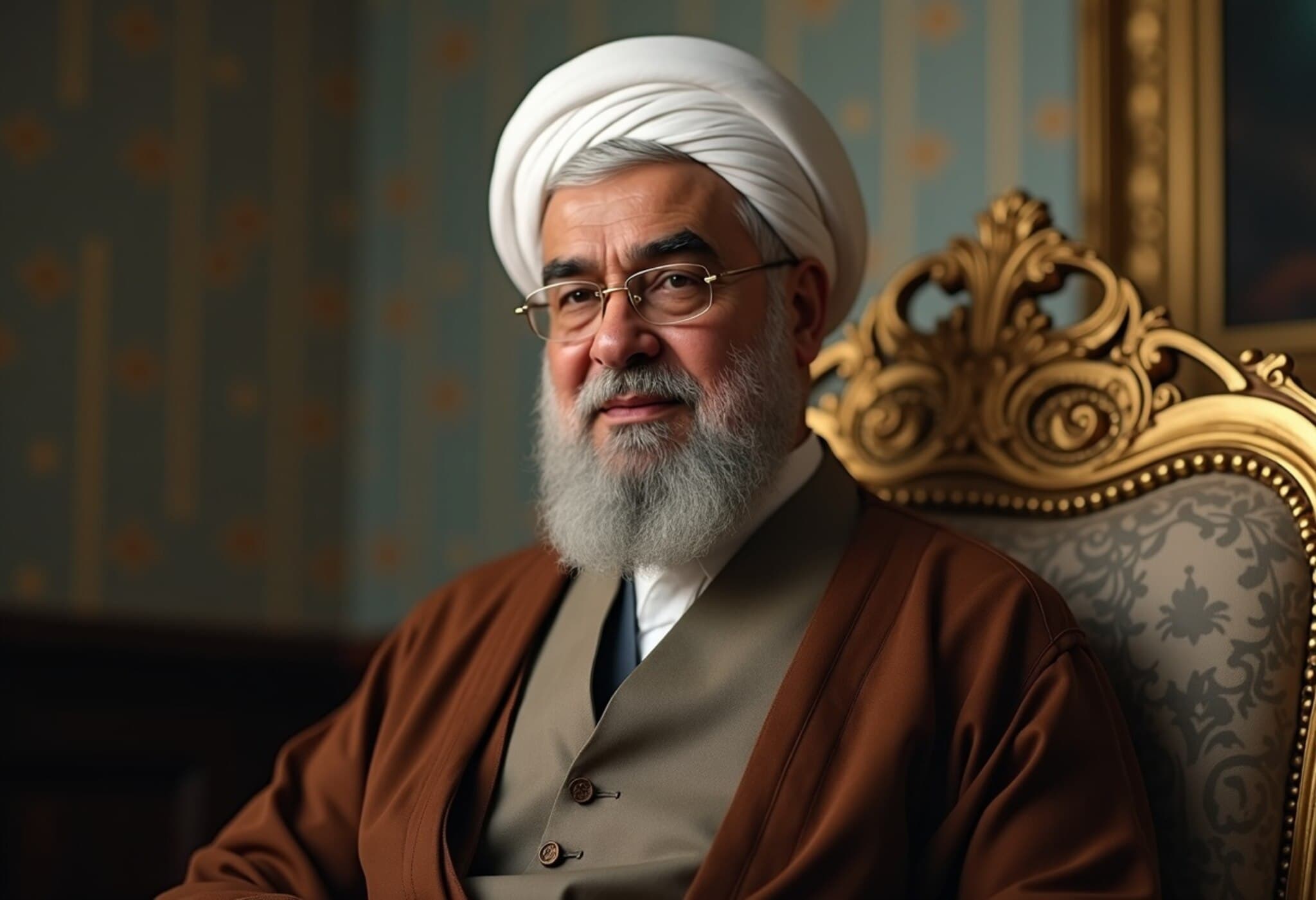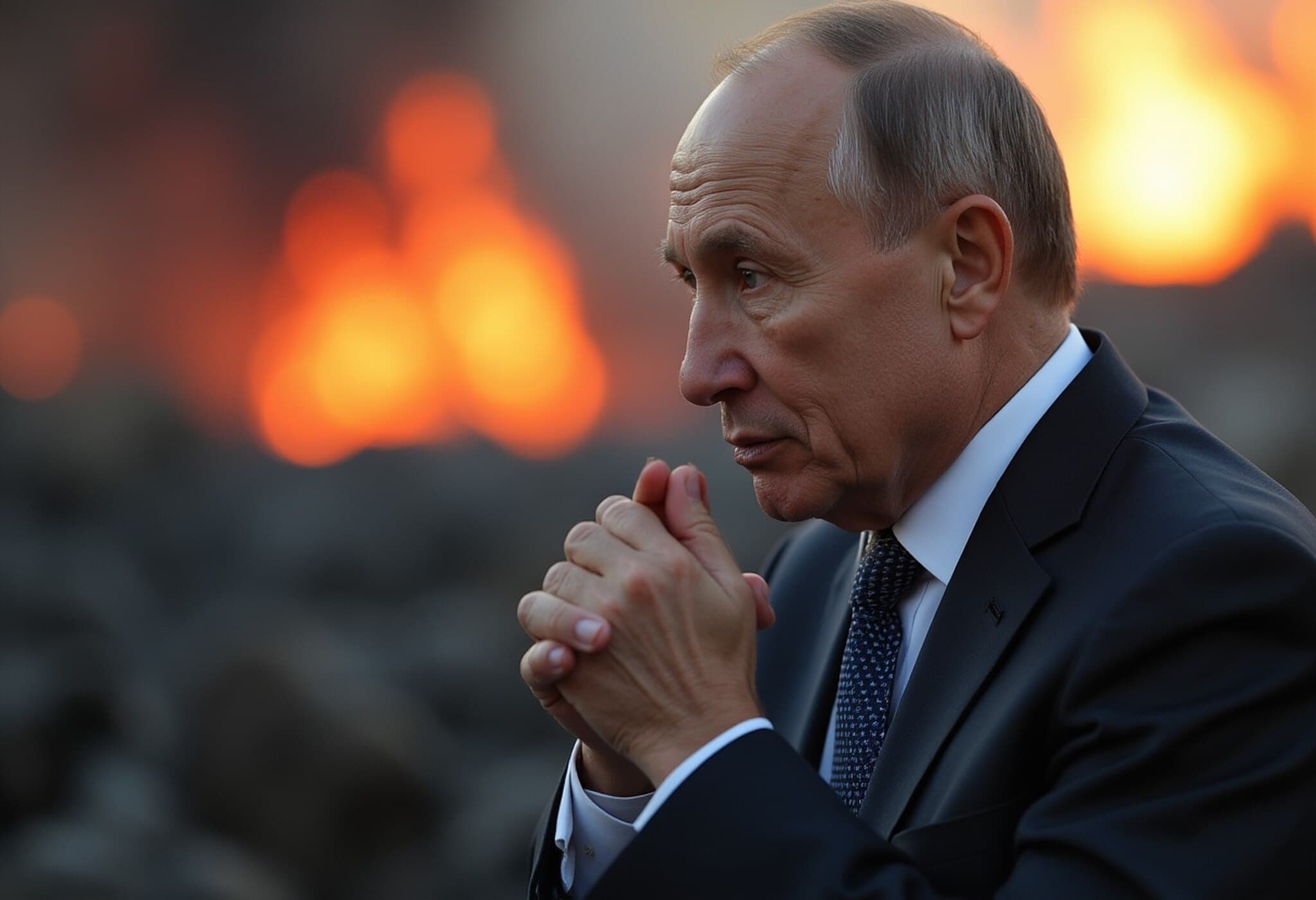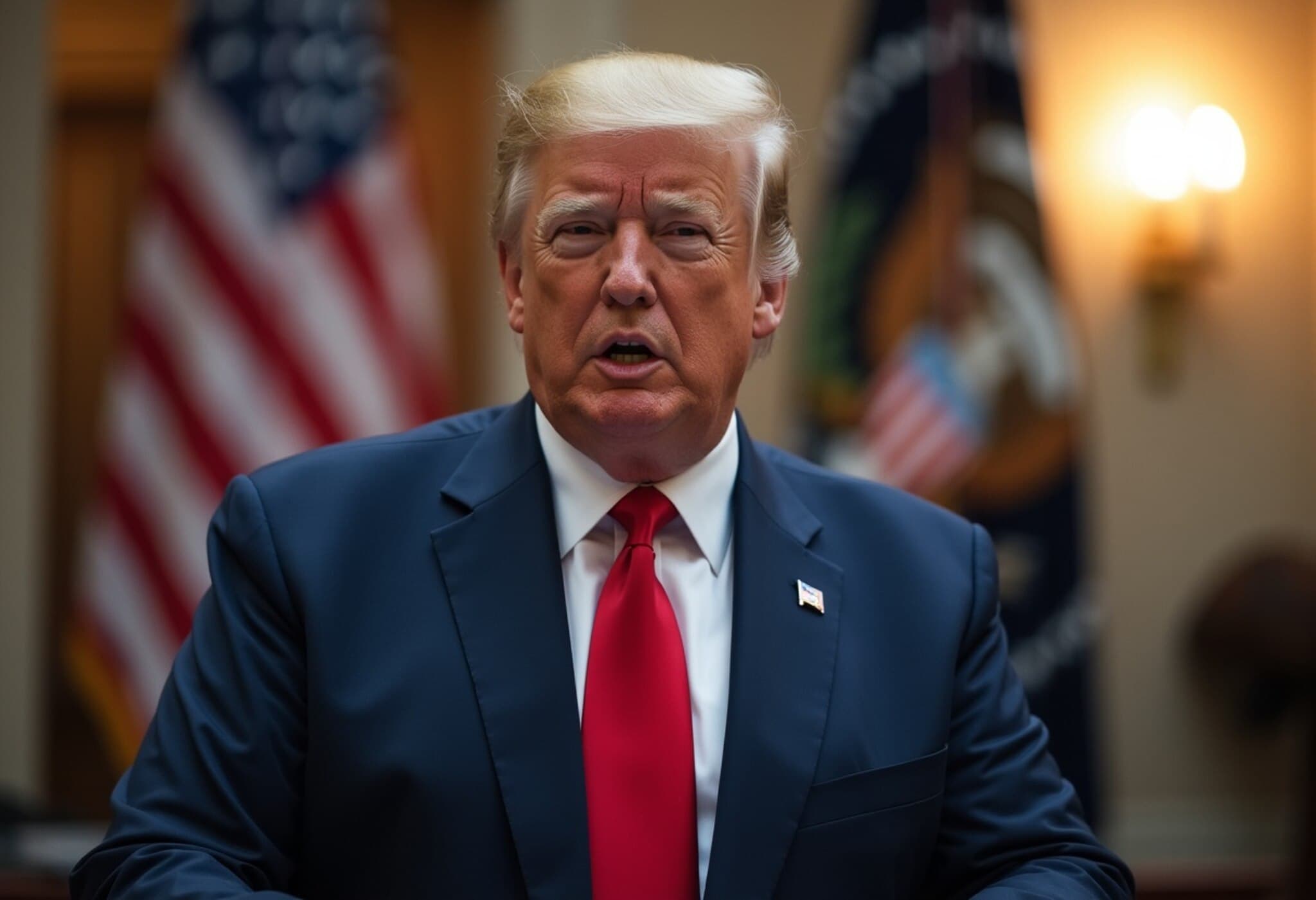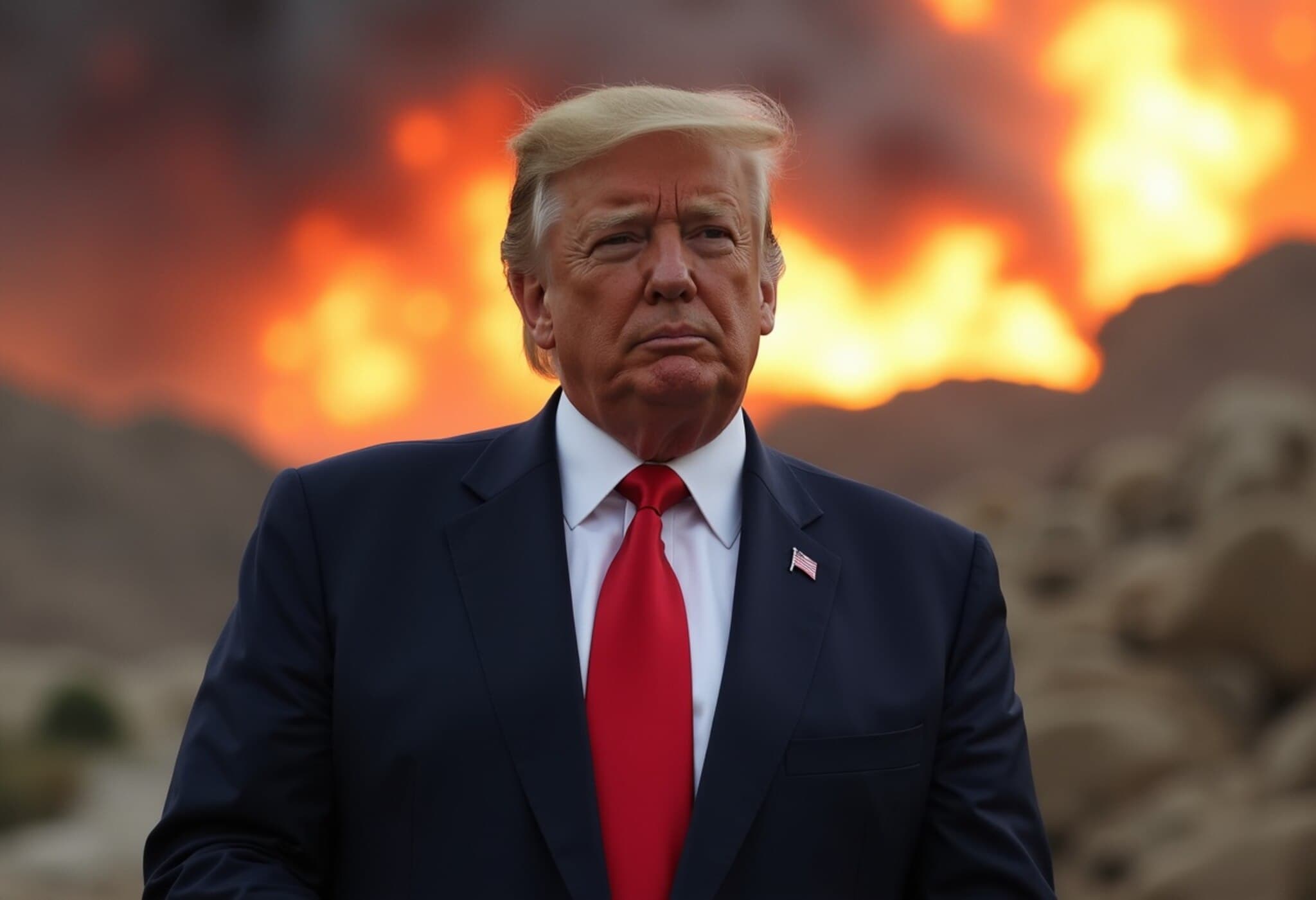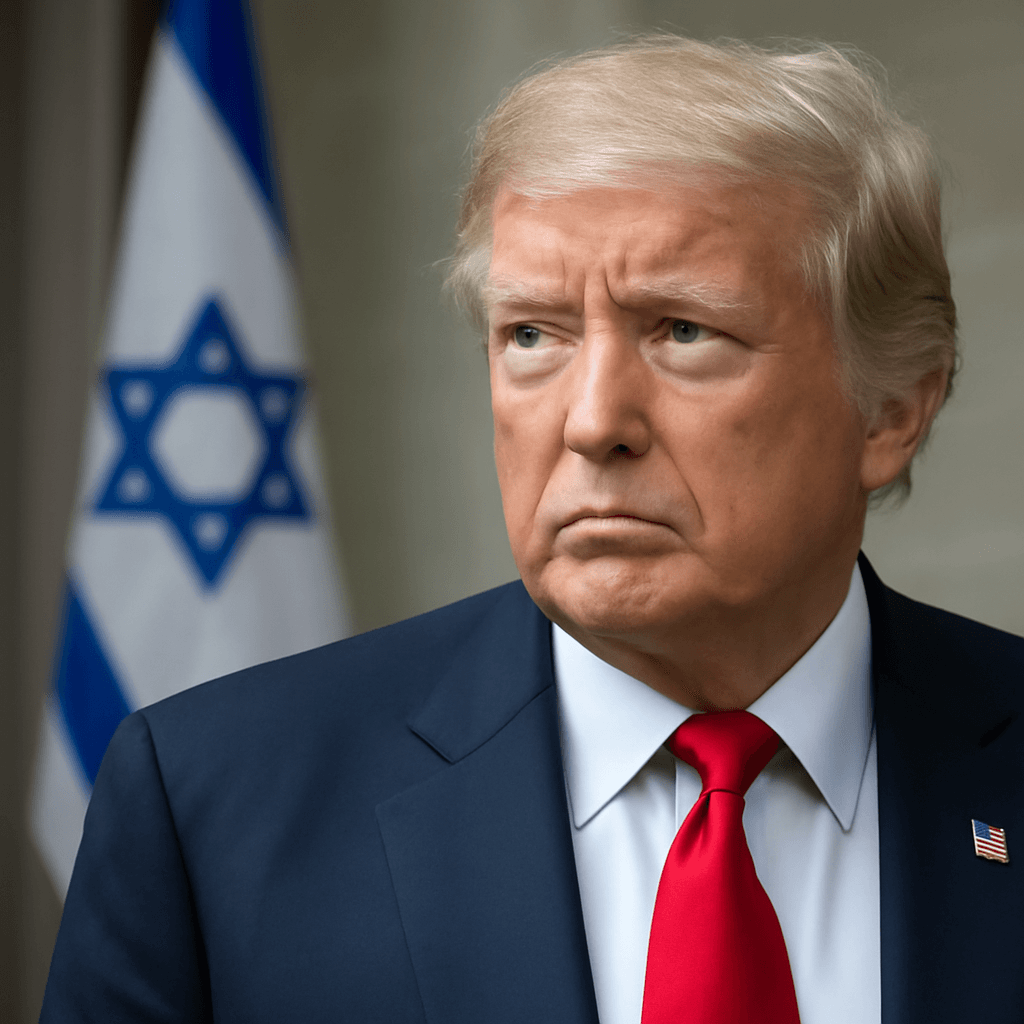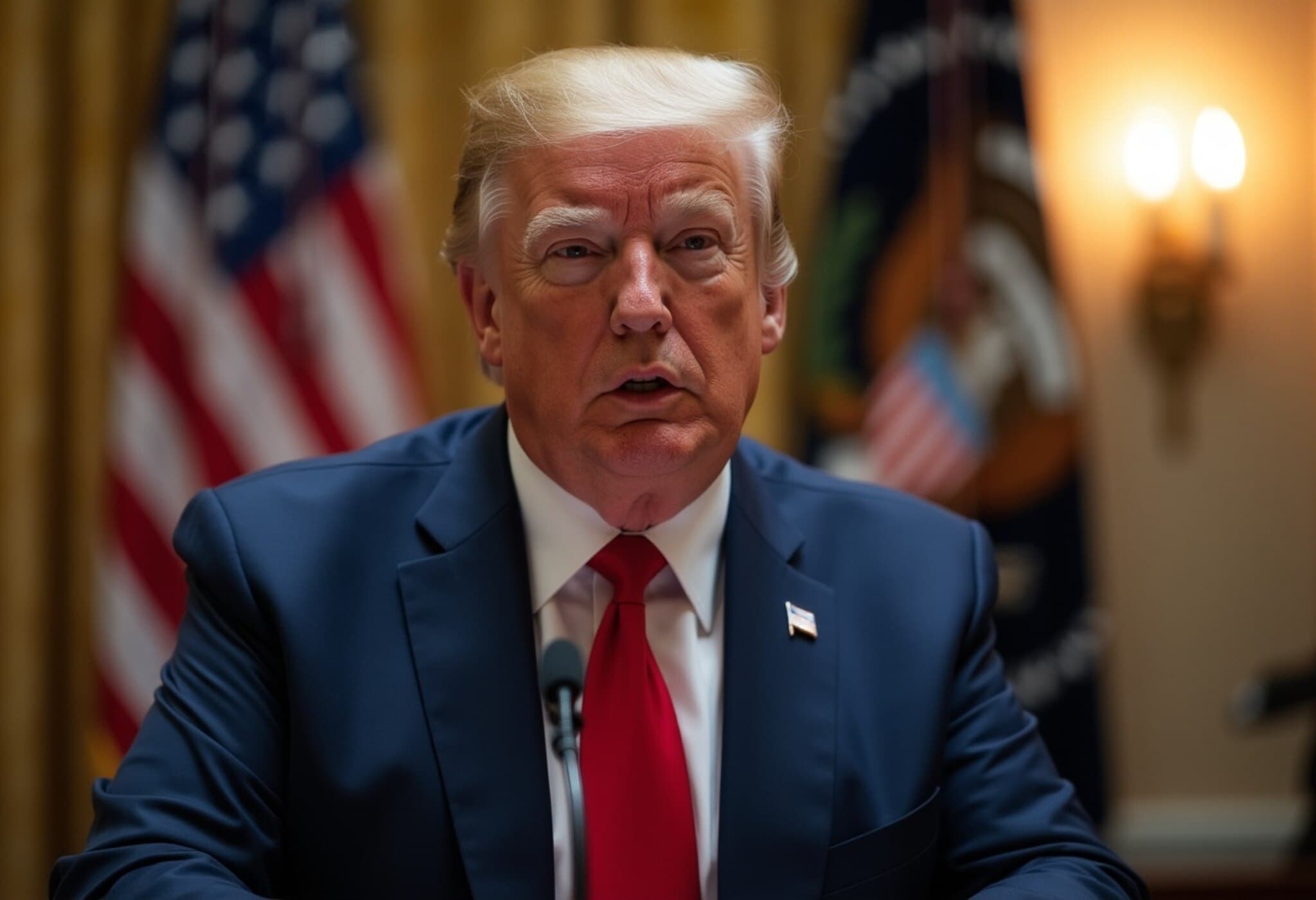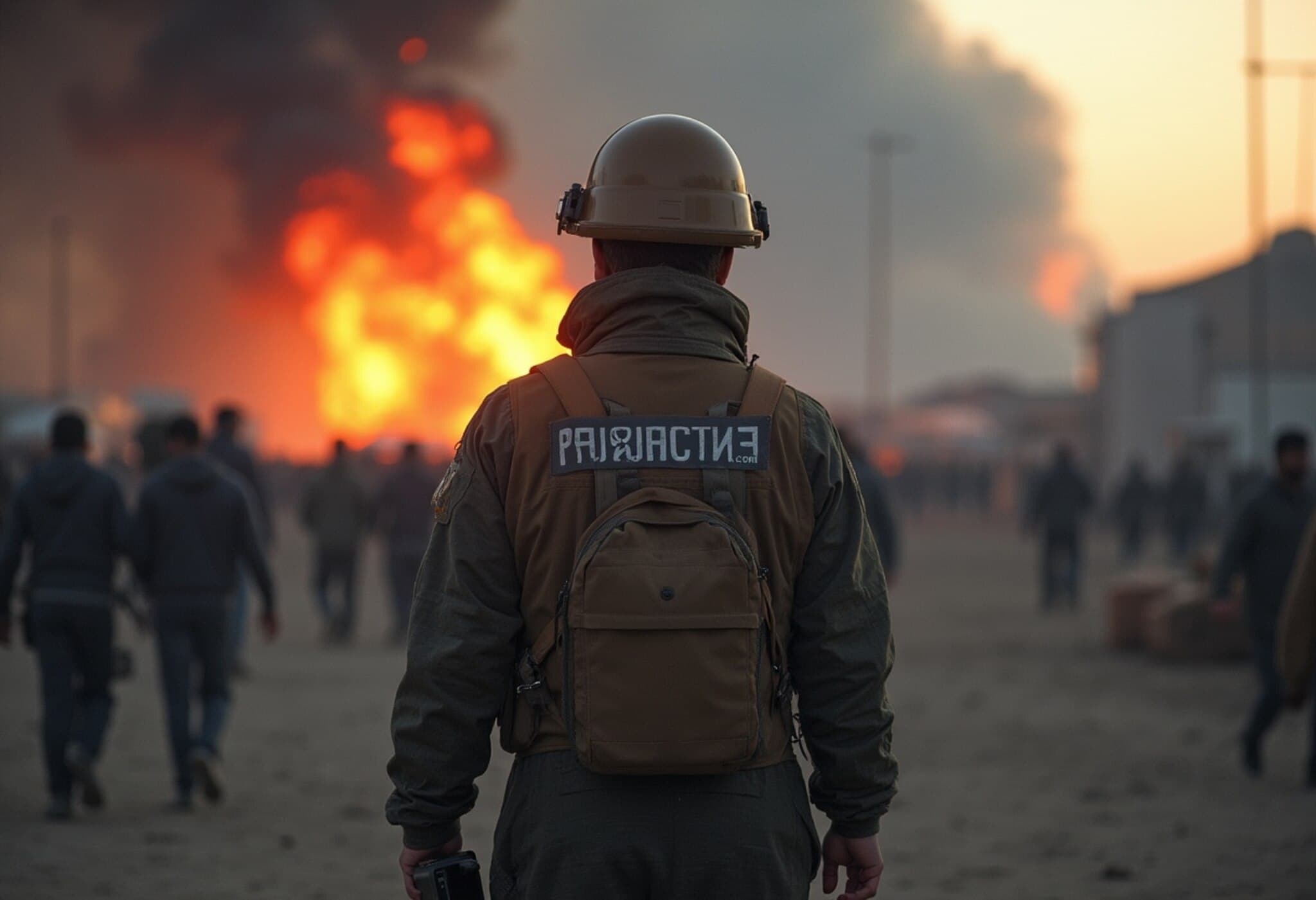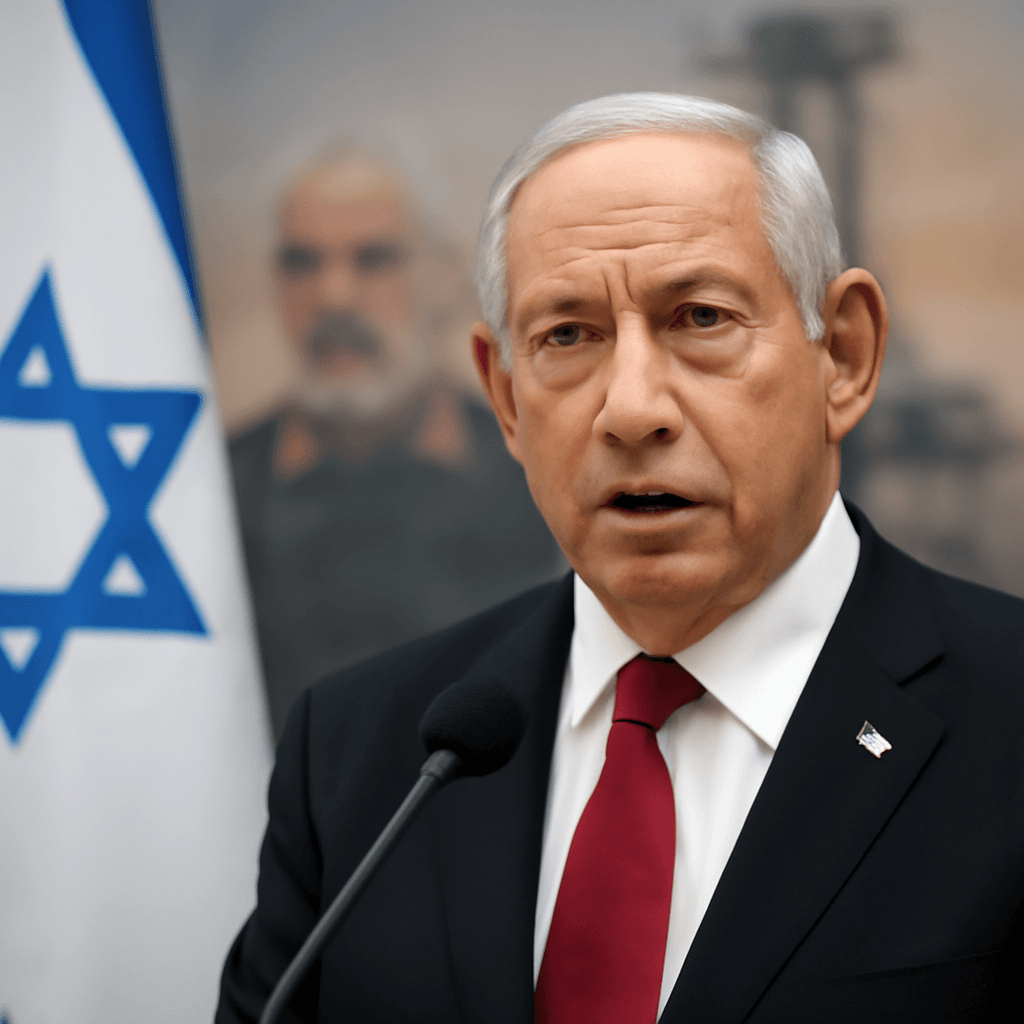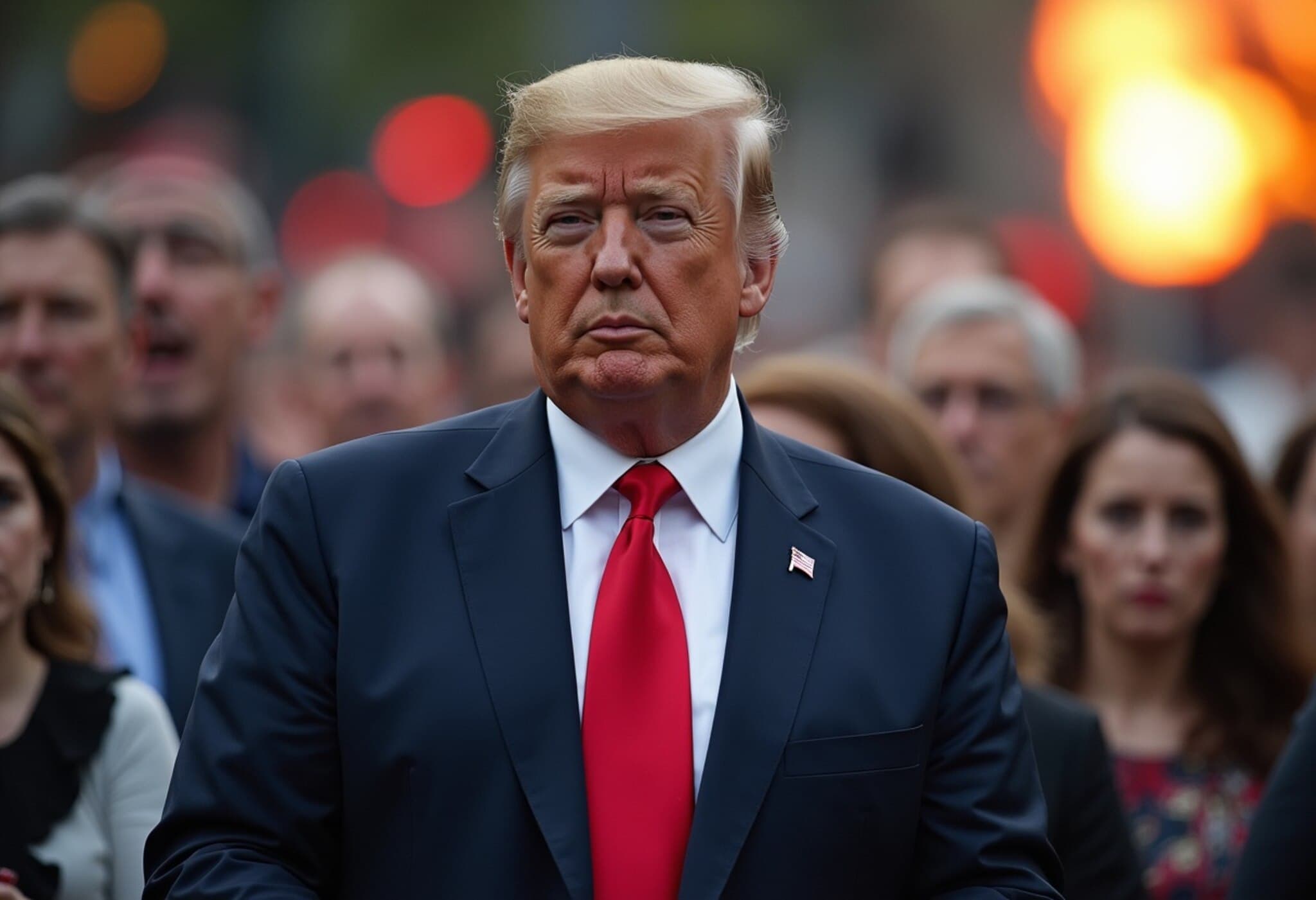Trump Pushes for a ‘Real End’ to the Israel-Iran Conflict
On June 17, 2025, US President Donald Trump announced his intent to achieve a “real end” to the escalating conflict between Israel and Iran. However, he dismissed the idea of a simple ceasefire, instead calling for a “complete give-up” by Iran. His remarks, made aboard Air Force One returning from the G7 Summit, signal a stark shift in the US approach—a move that suggests the possibility of deeper American involvement and heightened risks of a wider regional war.
Sharp Warnings and Targeted Threats
Trump’s statements have taken a confrontational tone, especially directed at Iran. He issued a blunt warning against any attacks on US military bases in the region, vowing a “gloves off” response if such strikes occur. More strikingly, he directly addressed Iranian Supreme Leader Ayatollah Ali Khamenei, revealing that US intelligence knows his exact whereabouts.
Trump elaborated, stating that although Khamenei is an easy target, “we are not going to take him out (kill!), at least not for now.” He emphasized that American patience is wearing thin and that missiles aimed at civilians or American soldiers would be met with severe consequences.
Military Build-Up in West Asia
The US is actively bolstering its military presence in the Middle East. Reports confirm the deployment of advanced fighter jets including F-16, F-22, and F-35 models, along with additional tanker aircraft and an aircraft carrier. Officials insist these moves are defensive, aimed at intercepting drones and projectiles, but the scale of the build-up underscores growing tensions.
Currently, the US maintains about 40,000 troops in the region, backed by sophisticated air defense systems capable of neutralizing missile threats, heightening the stakes in this volatile zone.
Global Responses and Regional Arms Expansion
Beyond US actions, notable international reactions have emerged. Turkish President Recep Tayyip Erdogan announced increased production of medium- and long-range missiles to elevate deterrence levels in the face of mounting regional threats.
Meanwhile, China’s President Xi Jinping expressed deep concern over Israel’s military operations against Iran. Speaking at a Central Asian summit, Xi urged all parties to de-escalate and avoid further aggravation of the conflict, emphasizing respect for national sovereignty and territorial integrity.
Intensified Strikes by Israeli Forces
On June 18, the Israeli Defense Forces conducted overnight airstrikes targeting an Iranian uranium enrichment facility and several missile production sites in Tehran. The IDF described the assaults as efforts to cripple Iran’s nuclear weapons program, highlighting a targeted centrifuge production site designed to accelerate uranium enrichment for military purposes.
The strikes reportedly involved around 50 Israeli fighter jets, accompanied by anti-aircraft defenses lighting up the skies over Tehran. Reports also indicate a significant evacuation of civilians near these strategic locations, while Israeli officials described their campaign as unleashing “a tornado storm” on Tehran.
Uncertain Path Forward: Diplomacy or Wider Conflict?
As tensions soar, the world watches closely to decipher President Trump’s endgame. Is his declaration for a real end a push for unprecedented diplomatic negotiations, a veiled threat of overwhelming force, or a strategic positioning for direct US involvement in a broader Middle Eastern war?
Regional powers and the international community remain on high alert, bracing for potential shifts that could reverberate far beyond the borders of West Asia.

